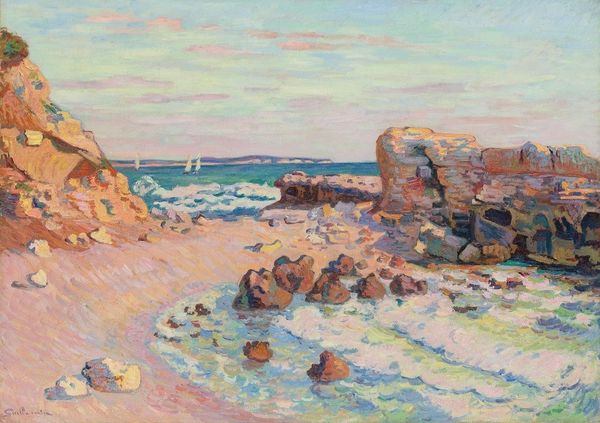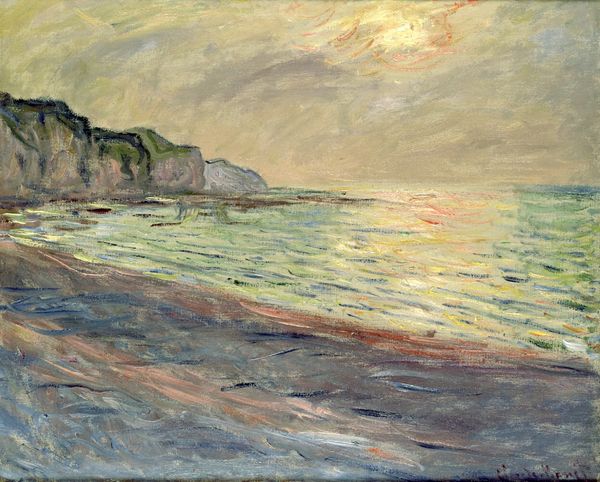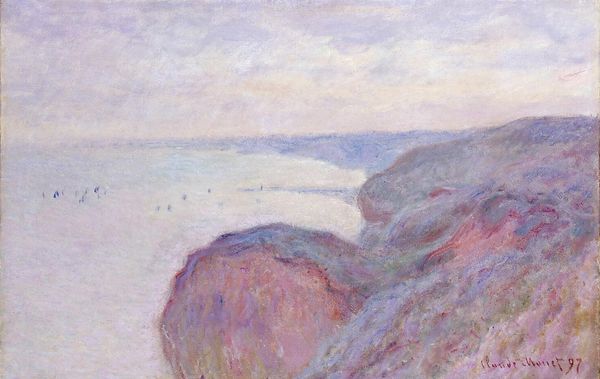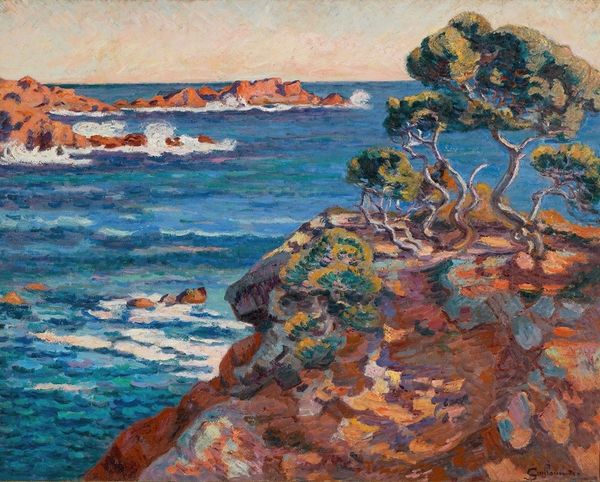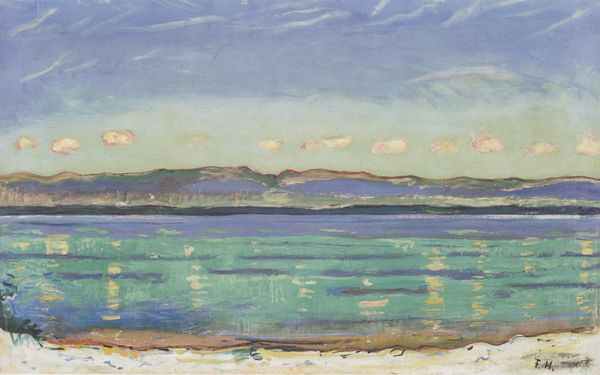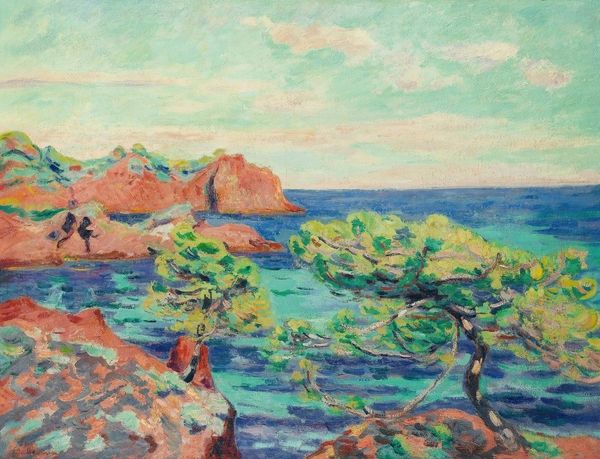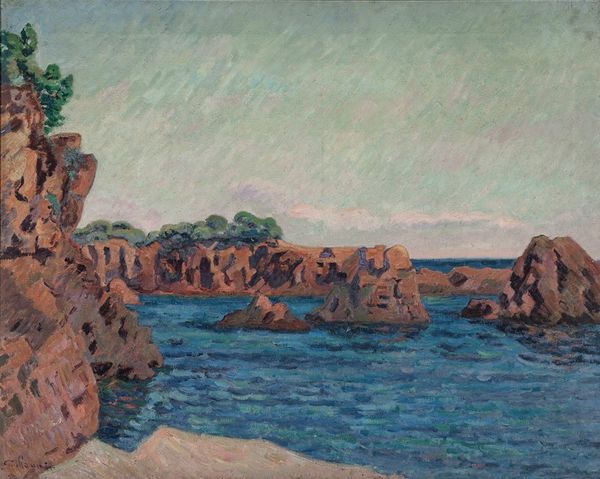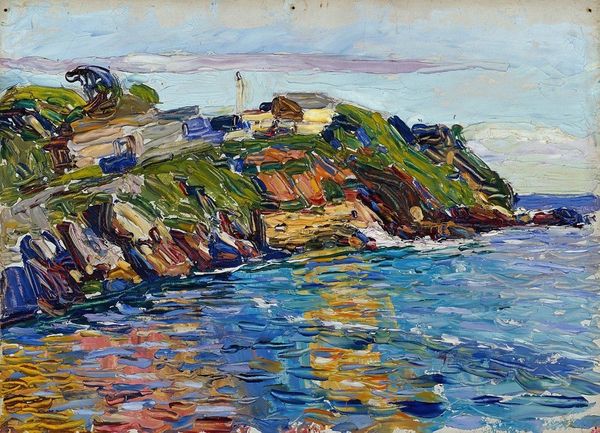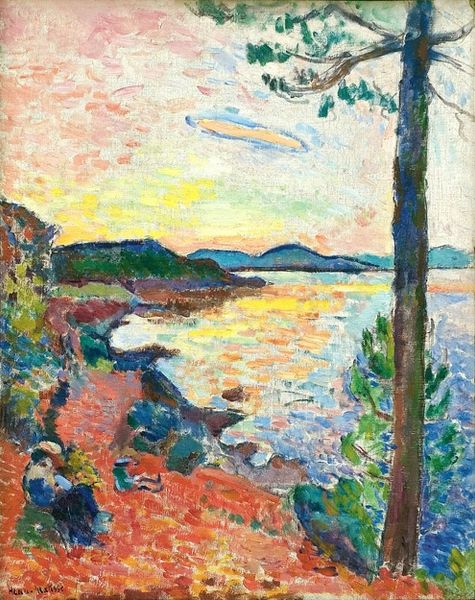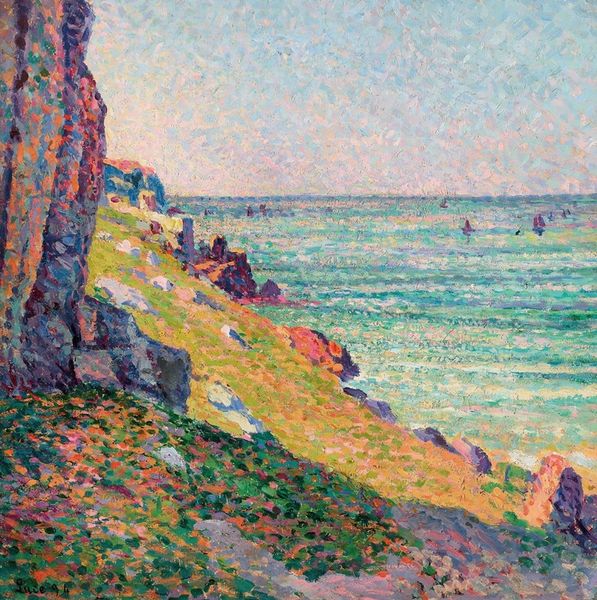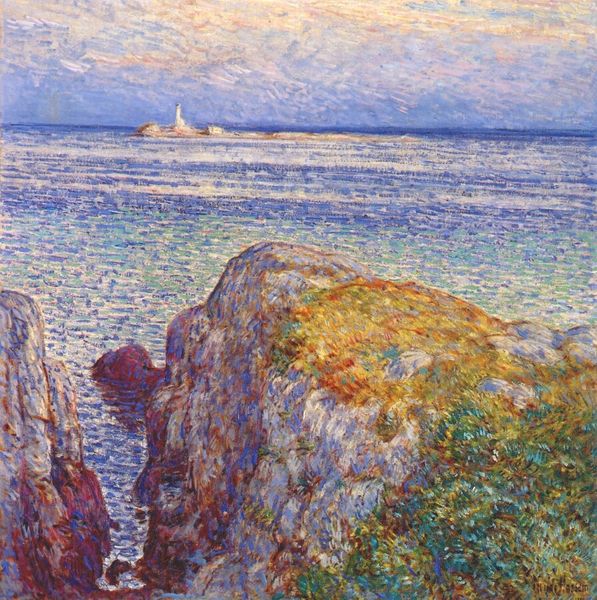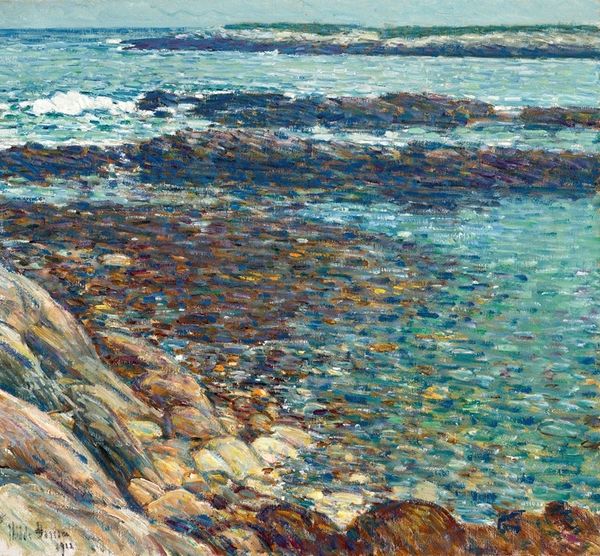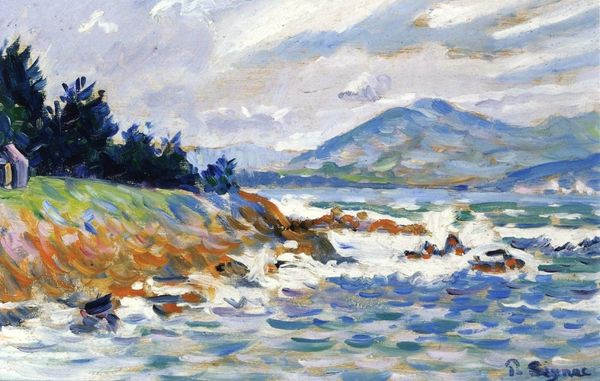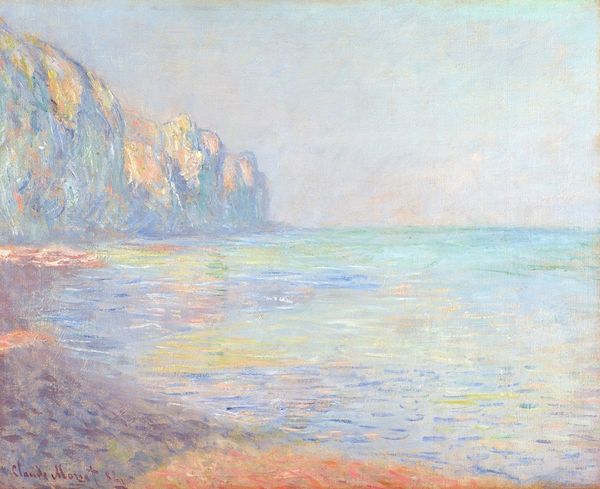
Copyright: Public domain
Curator: What a strikingly ethereal scene. There's almost a dreamlike quality to it. Editor: Indeed. We are looking at "Boys on the Beach," a 1910 oil-on-canvas creation by the Finnish artist Magnus Enckell. It’s currently part of this collection and offers a subtle window into the socio-cultural currents of the era. Curator: Subtlety is right. I’m immediately struck by the almost otherworldly palette – these pale blues and lavender hues that feel distinctly Nordic. And the figures… there's something so delicately vulnerable about them. The whole scene radiates a specific mood, a melancholic tenderness, would you agree? Editor: I would. Enckell was a key figure in Finnish symbolism, and this work speaks volumes. Think about the time: early 20th century, a period ripe with social and political change, but also an intense focus on identity. These aren't just boys on a beach. They're symbols of youth, nature, and perhaps a yearning for something more innocent in a rapidly changing world. Curator: That connects with Enckell's place as a queer artist in that period as well, yes? He was quite interested in revealing interior worlds... I see how those figures could suggest both freedom and the heavy weight of secrets. Editor: Precisely. Consider also the compositional elements: the vast, open space juxtaposed against the contained forms of the boys. The impasto technique—the thick application of paint—lends a certain solidity, but the colors keep it buoyant, resisting complete groundedness. I am also keen on Enckell using a public setting, like the beach, as a canvas where individual identities are allowed to roam uninhibited under broad daylight. Curator: And there's something timeless about that contrast, isn't there? We see it today, these spaces for exploring one's self... it speaks to our long history, if that makes sense. Editor: It does. A picture like this becomes a powerful commentary when museums act as forums for ongoing conversation and collective memory. Ultimately, its meaning lies as much in its original historical context as it does in its continued resonance for contemporary audiences. Curator: Yes, how we reflect upon images to find meaning! A beautiful point to take with us. Editor: I'll carry that, for sure. Thanks for sharing these thoughts.
Comments
No comments
Be the first to comment and join the conversation on the ultimate creative platform.
